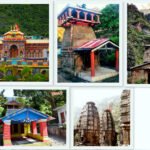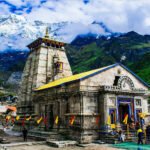Valley of Flower Tour: A Paradise in the Himalayas
The Valley of Flower tour is a breathtaking experience in the Chamoli district of Uttarakhand, India. Nestled in the Western Himalayas, this UNESCO World Heritage Site is famous for its stunning natural beauty, vibrant alpine meadows, and diverse flora and fauna. At an altitude of 3,300 to 3,600 meters (10,800 to 11,800 feet), the Valley of Flowers is a paradise for nature lovers, botanists, trekkers, and photographers.
History and Discovery
The **Valley of Flower tour** became renowned in 1931 when British mountaineer Frank S. Smythe discovered the valley by chance after a successful expedition to Mount Kamet. Captivated by its beauty and abundance of wildflowers, Smythe penned a book titled “The Valley of Flowers,” bringing global attention to this hidden Himalayan gem. In 1982, the Indian government designated the valley as a national park to protect its unique ecosystem, and it was recognized as a UNESCO World Heritage Site in 2004.
Flora and Fauna of the Valley of Flowers
A **Valley of Flower tour** offers a chance to witness its rich biodiversity and vibrant wildflower displays. From July to September, over 600 species of flowering plants, including blue poppies, orchids, daisies, marigolds, and the rare Brahma Kamal (Saussurea obvallata), create a colorful carpet against lush green meadows and snow-capped peaks. The valley also shelters rare animals like the Asiatic black bear, snow leopard, blue sheep (bharal), musk deer, and Himalayan monal, making it a birdwatcher’s paradise.
The Trek to the Valley of Flowers
Embarking on a **Valley of Flower tour** involves a trek that begins from Govindghat, a small town along the Rishikesh-Badrinath highway. From Govindghat, trekkers travel by shared jeep to Pulna, the last motorable point. The trek from Pulna to Ghangaria, the base camp for the Valley of Flowers, spans approximately 10 kilometers and takes about 4 to 6 hours, depending on fitness levels.
The trail from Ghangaria to the Valley of Flowers is around 4 kilometers and relatively easy, accessible to trekkers of all ages. The well-marked path features breathtaking views of waterfalls, lush forests, and snow-covered mountains. As trekkers enter the valley, they are greeted by a magical landscape of wildflower meadows, glistening streams, and panoramic views of the Himalayas.
Best Time to Visit the Valley of Flowers
The optimal time for a **Valley of Flower tour** is during the monsoon season, from mid-July to early September, when the flowers bloom in full glory. The valley remains snow-covered from November to April, and the park is officially open to visitors from June to October. However, the peak flowering season occurs in July and August, transforming the landscape into a vibrant kaleidoscope of colors.
Significance and Cultural Importance
The Valley of Flower tour is enriched by Hindu mythology and local folklore. Believed to be the abode of fairies and a celestial garden created by the gods, the valley is associated with the tale of Hanuman, the monkey god, who allegedly came here to collect the mythical herb Sanjivani to revive Lakshman during the Ramayana.
Additionally, the valley holds spiritual significance for Sikhs, with Hemkund Sahib, a revered Sikh pilgrimage site, located nearby. Many pilgrims embark on both the **Valley of Flower tour** and Hemkund Sahib as part of their spiritual journey, experiencing the serene beauty and divine aura of the Himalayas.
Tips for Visiting the Valley of Flowers
– **Physical Fitness**: The trek to the Valley of Flowers requires moderate fitness. It’s advisable to prepare with regular walks, hikes, or cardio exercises before the trip.
– **Permits**: An entry permit from the Forest Department office in Ghangaria is necessary to enter the Valley of Flowers. The entry fee varies for Indian citizens and foreign nationals, and the park is open from 7:00 AM to 5:00 PM daily.
– **Accommodation**: Ghangaria offers basic accommodation options like guesthouses, lodges, and campsites. Booking in advance during peak season is recommended to ensure availability.
– **Weather Conditions**: The unpredictable Himalayan weather necessitates carrying warm clothing, rain gear, and sturdy trekking shoes. The valley can be chilly in the mornings and evenings, even during summer.
– **No Overnight Stay**: Overnight stays in the Valley of Flowers are not permitted. Visitors must return to Ghangaria by late afternoon, so starting the trek early in the morning is advisable for a fulfilling visit.




